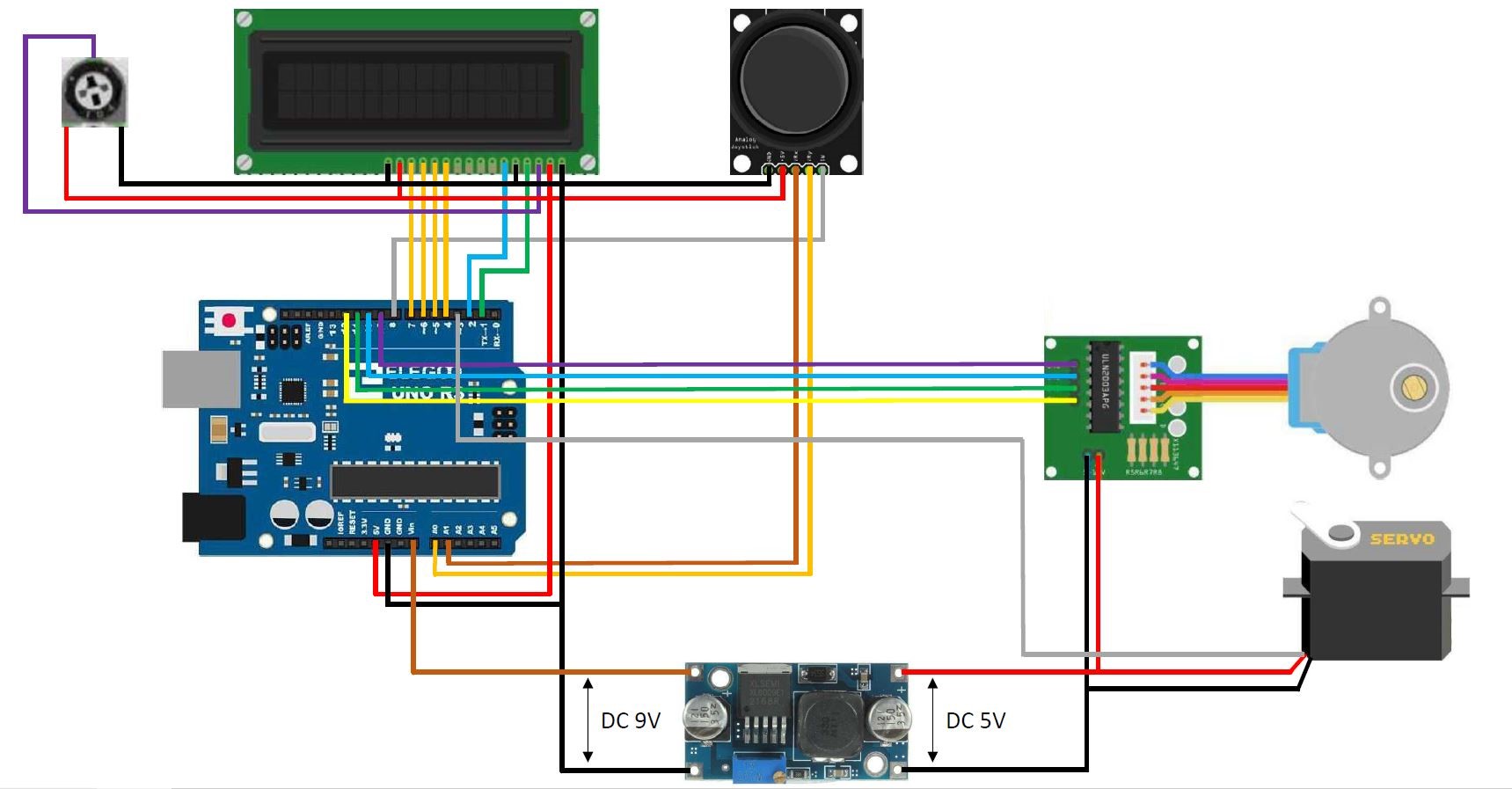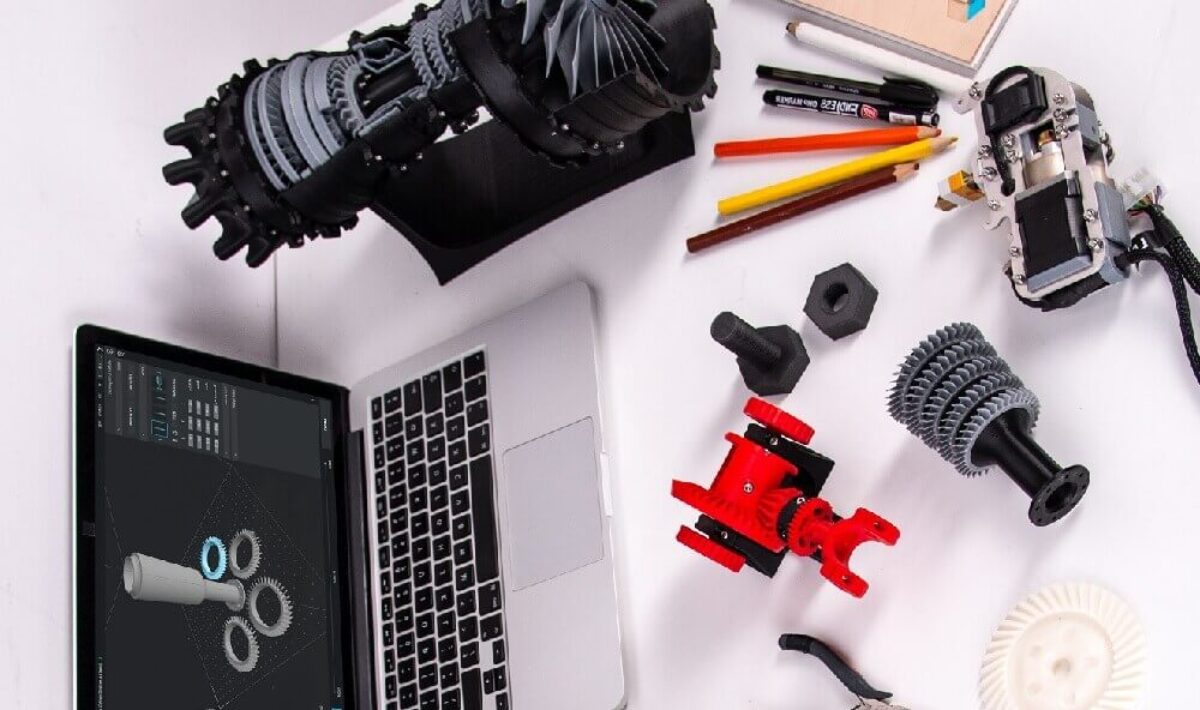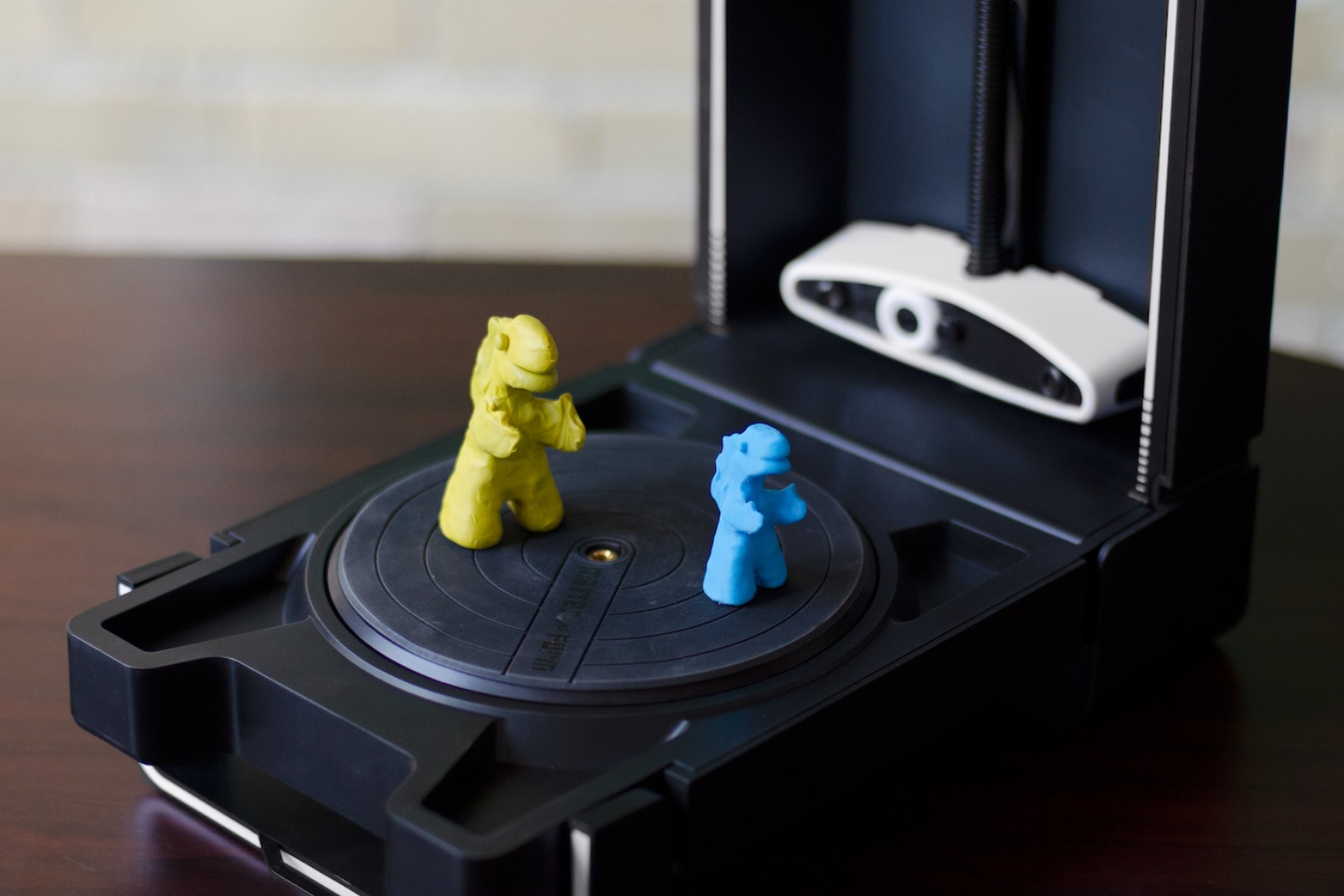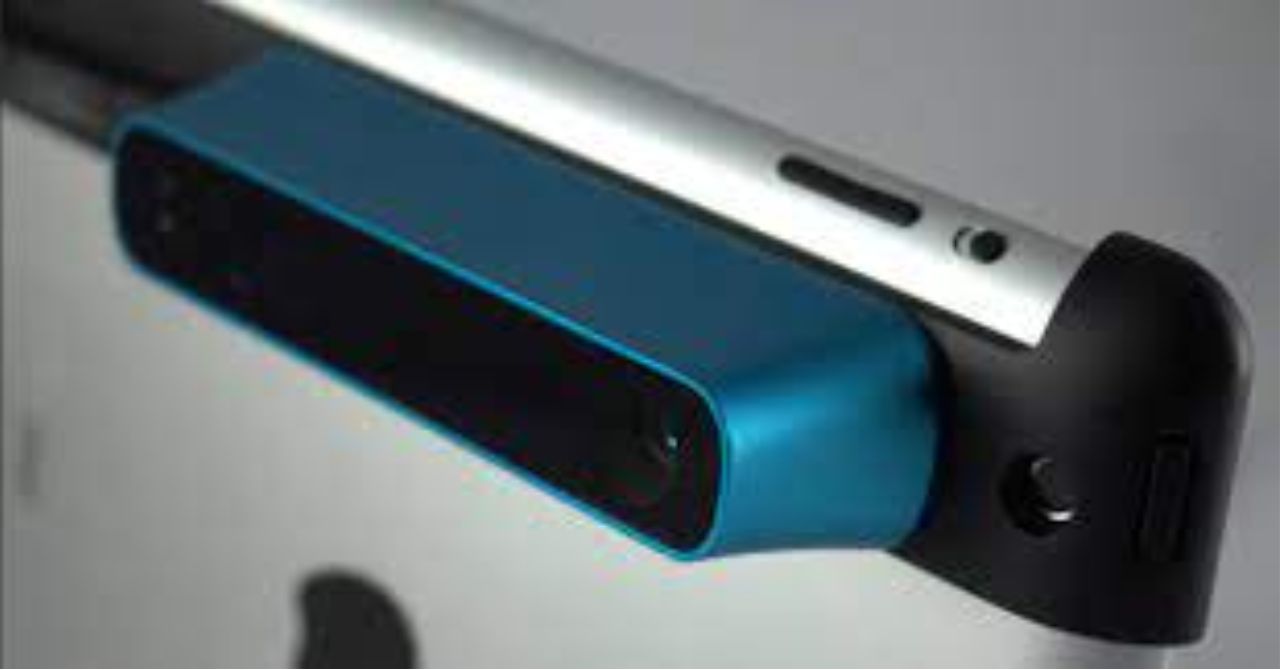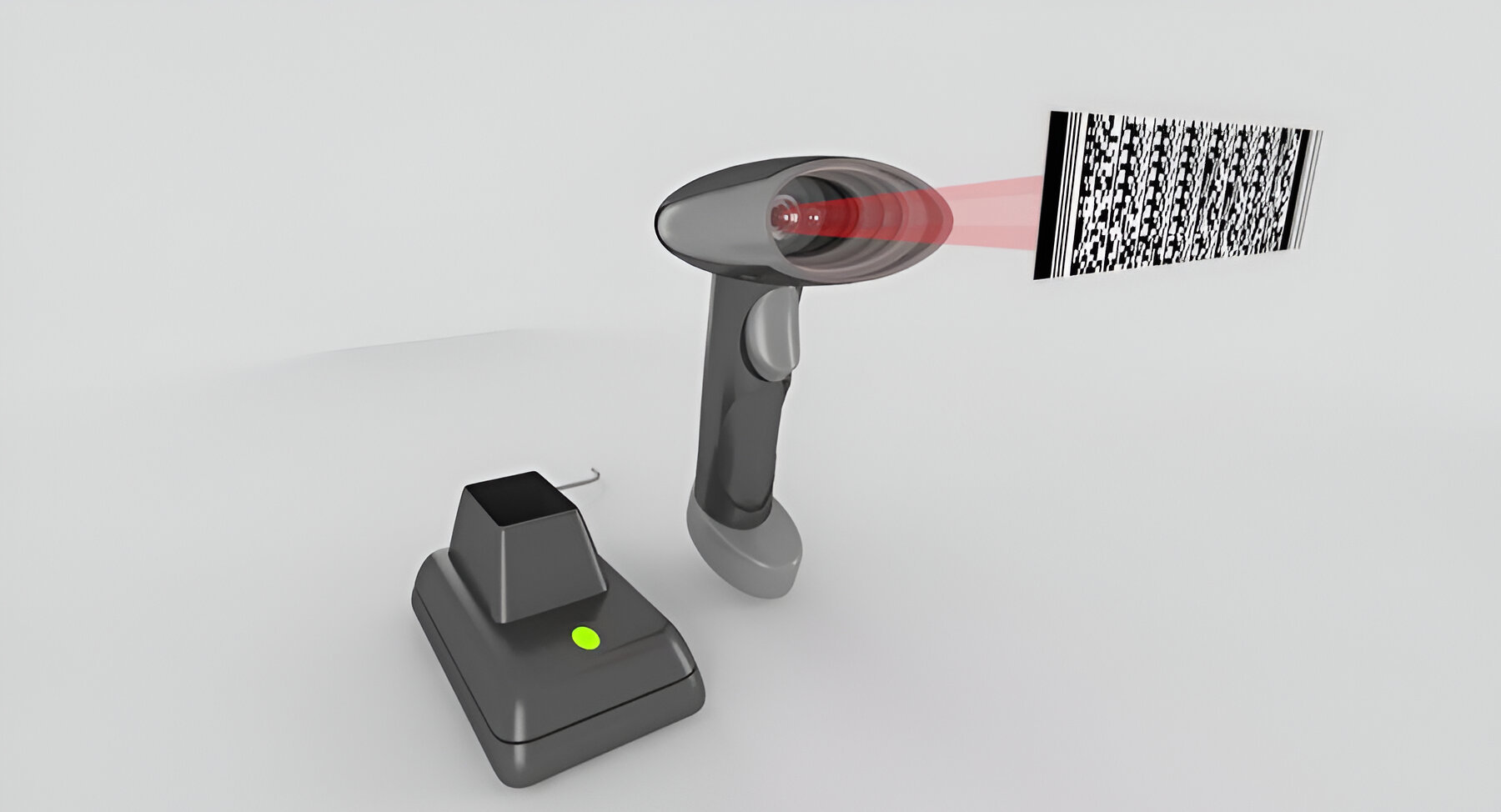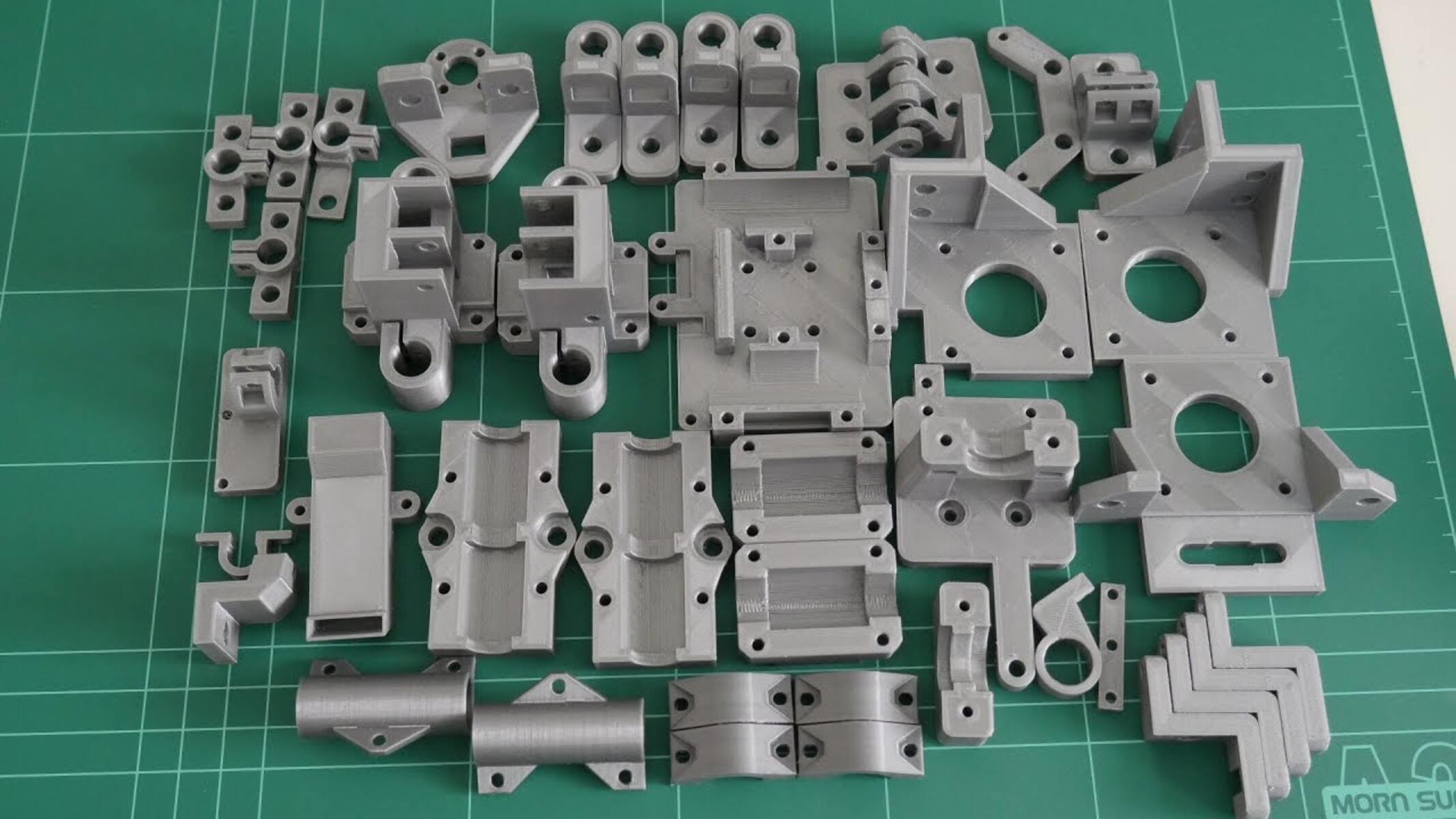Introduction
Creating a 3D scanner may seem like a complex task, but with the right knowledge and tools, it can be an exciting and rewarding project. The ability to capture real-world objects and transform them into digital 3D models opens up endless possibilities for various industries, including gaming, animation, virtual reality, and product design.
In this article, we will dive into the process of writing code for creating a 3D scanner. We will explore the fundamental concepts behind 3D scanning, discuss the required software and libraries, and guide you through each step of the process, from setting up the development environment to exporting the final 3D model.
Before we delve into the technical intricacies, it’s important to understand the basics of 3D scanning. A 3D scanner is a device that captures the shape and appearance of real-world objects, creating a digital representation in the form of a 3D model. This device uses various technologies, such as structured light, laser, or depth sensors, to acquire data about the object’s geometry and texture.
With the rise of affordable depth cameras and advancements in computer vision algorithms, creating a 3D scanner has become more accessible. By leveraging these tools, you can transform a regular camera into a powerful device capable of capturing detailed depth information and reconstructing it into a realistic 3D model.
Throughout this article, we will be focusing on a popular technique called structured light 3D scanning. This method involves projecting a pattern of light onto the object and analyzing the deformation of the pattern to determine the shape and depth information. While other methods exist, structured light offers a good balance between cost, accuracy, and ease of implementation.
Whether you’re a hobbyist exploring the world of 3D scanning or a developer looking to expand your skillset, this article will serve as a comprehensive guide to writing code for creating a 3D scanner. By the end, you’ll have the knowledge and tools to embark on your own 3D scanning projects, opening up a world of possibilities in the realm of digital representation and visualization.
Understanding the Basics of 3D Scanning
Before we dive into the intricacies of coding a 3D scanner, it’s essential to grasp the fundamental concepts behind 3D scanning. 3D scanning is the process of capturing the shape and appearance of real-world objects and converting them into digital 3D models. This technology has revolutionized industries like gaming, animation, virtual reality, and product design, enabling precise digital replication of physical objects.
There are various techniques and technologies used in 3D scanning, including structured light, laser, and depth sensors. Each method has its advantages and limitations, but in this article, we will primarily focus on structured light 3D scanning. Structured light involves projecting a pattern of light onto the object and analyzing its deformation to extract depth information.
To understand structured light 3D scanning, imagine shining a grid pattern onto an object. As the pattern interacts with the object’s shape, it deforms. By capturing images of the deformed pattern, we can analyze the distortions to reconstruct the object’s geometry. This technique allows us to create a point cloud, which is a collection of 3D points representing the object’s surface.
The quality and accuracy of a 3D scan depend on multiple factors, such as the resolution of the camera, the precision of the projector, and the calibration of the system. Achieving optimal results requires careful calibration and synchronization between the camera and the projector to ensure accurate depth measurements and minimize distortions.
It’s important to note that 3D scanning is not just about capturing geometry; textures and colors can also be acquired to create realistic 3D models. By combining the point cloud with texture information from photographs, we can create visually appealing and accurate 3D representations of objects.
As you embark on your journey to code a 3D scanner, it’s essential to understand the underlying principles of 3D scanning and the techniques involved. This understanding will enable you to make informed decisions during the coding process and troubleshoot any issues that may arise.
In the next section, we will guide you through setting up the development environment required for coding a 3D scanner.
Setting Up the Development Environment
Before we can start coding a 3D scanner, we need to set up the development environment with the necessary tools and software. This will ensure that we have everything we need to begin our coding journey.
The first step is to determine which programming language you will use for your 3D scanning project. There are several options available, including C++, Python, and MATLAB. Each language has its advantages, so choose the one that you are most comfortable with or the one that best suits your project requirements.
Once you have selected a programming language, the next step is to install any additional libraries or frameworks that may be required. Some popular libraries for 3D scanning include OpenCV, PCL (Point Cloud Library), and OpenGL. These libraries provide essential functionalities for computer vision, point cloud processing, and rendering, respectively.
To install these libraries, consult their respective documentation for step-by-step instructions. Many of these libraries have pre-built binaries, making installation relatively straightforward. However, if you prefer more control or require specific customization, you may choose to build them from source.
After installing the necessary libraries, it’s important to ensure that you have the appropriate hardware for your 3D scanning project. At a minimum, you will need a camera and a projector. For structured light 3D scanning, a camera capable of capturing both color and depth information is ideal. The choice of the camera will depend on factors such as resolution, frame rate, and budget. Additionally, a projector capable of displaying structured light patterns is required.
Calibration is a critical step in ensuring accurate and precise 3D scans. To calibrate the camera and projector, you will need a calibration target. This can be a checkerboard pattern printed on a flat surface. Using calibration software, such as OpenCV’s camera calibration module, you can analyze images of the checkerboard pattern to estimate the intrinsic and extrinsic parameters of the camera and projector.
Lastly, it’s essential to have a dedicated workspace for your 3D scanning setup. A well-lit area with minimal background clutter and controlled lighting conditions will result in better quality scans. Additionally, consider the size of the objects you plan to scan and ensure that your workspace has sufficient room to accommodate them.
By setting up the development environment properly, you can ensure a smooth coding experience and have all the necessary tools at your disposal. In the next section, we will delve into the installation of the required software and libraries for implementing a structured light 3D scanning system.
Installing the Required Software and Libraries
Now that we have our development environment set up, the next step is to install the required software and libraries for implementing a structured light 3D scanning system. These tools will provide the necessary functionalities for capturing depth data, processing point clouds, and generating 3D models.
One of the essential libraries for 3D scanning is OpenCV (Open Source Computer Vision Library). OpenCV is a popular open-source library that provides comprehensive computer vision functionalities, including image processing, feature detection, and camera calibration. It supports various programming languages such as C++, Python, and Java, making it accessible for a wide range of developers. To install OpenCV, you can follow the installation guides and documentation provided on the official OpenCV website.
Another crucial library for 3D scanning is the Point Cloud Library (PCL). PCL is an open-source library that is specifically designed for point cloud processing and 3D geometric data manipulation. It provides a wide range of algorithms for filtering, registration, segmentation, and surface reconstruction. To install PCL, you can refer to the PCL documentation, which provides detailed instructions for different operating systems and builds.
In addition to OpenCV and PCL, you may also need to install other libraries, depending on your specific project requirements. For example, if you plan to visualize and render 3D models, you might want to consider using a library like OpenGL or Three.js. These libraries provide tools for rendering 3D graphics on different platforms and can enhance the visualization capabilities of your 3D scanner.
Apart from the libraries, you might also need to install specific software tools for camera calibration and pattern projection. OpenCV provides a camera calibration module that can be used to estimate the intrinsic and extrinsic parameters of your camera. Additionally, you will need a pattern projector or a projector calibration software to generate and display structured light patterns accurately.
It’s important to note that the installation process may vary depending on the operating system you are using. Consult the documentation and installation guides of each library and software tool to ensure a smooth installation process. Additionally, keep in mind any dependencies that might be required and ensure they are properly installed before proceeding.
By installing the required software and libraries, you will have a solid foundation for implementing a structured light 3D scanning system. In the next sections, we will explore the steps involved in acquiring and calibrating the camera, capturing depth data, and processing the point cloud.
Acquiring and Calibrating the Camera
To begin the process of building a 3D scanner, one of the first steps is to acquire and calibrate the camera that will be used for capturing the depth information. The camera plays a crucial role in accurately capturing the geometry of the objects being scanned, so it is important to ensure that it is calibrated properly.
When selecting a camera, there are several factors to consider. One of the most important factors is the camera’s depth sensing capabilities. To perform structured light 3D scanning, the camera needs to capture both color information and depth information. Many depth cameras, such as the Intel RealSense or the Microsoft Kinect, are capable of providing depth data in addition to RGB images. These cameras are popular choices for 3D scanning due to their affordability and robust capabilities.
Once you have acquired your camera, the next step is to calibrate it. Calibration is crucial because it corrects for any distortions or errors in the camera’s imaging system. This helps to ensure accurate depth measurements and improve the quality of the 3D scanning results.
To calibrate the camera, you will need a calibration target. A commonly used target is a checkerboard pattern printed on a flat surface. The pattern should have a sufficient number of corners and squares to allow for accurate calibration. Place the calibration target within the camera’s field of view and capture a series of images from different angles and positions.
There are various calibration algorithms available, and OpenCV provides a robust camera calibration module that can be used for this purpose. It estimates the intrinsic parameters of the camera, such as focal length, principal point, and lens distortion coefficients. By analyzing the images of the calibration target, the module provides the necessary calibration parameters that can later be used to rectify the captured images and compute accurate depth information.
It’s important to note that proper lighting conditions are essential during the calibration process. Ensure that the calibration target is well-illuminated and that there are no strong shadows or reflections on the target surface. Consistent lighting will contribute to more accurate calibration results.
Once the camera is calibrated, you will have the necessary parameters to rectify the captured images during the scanning process. This rectification step helps in removing the distortion caused by the camera’s lens and improves the accuracy of the depth measurements.
By acquiring and calibrating the camera, you have taken the crucial first steps towards building a functional 3D scanner. In the next section, we will explore the process of capturing depth data using structured light patterns.
Capturing Depth Data with Structured Light
With the camera calibrated, we can now move on to capturing depth data using the structured light method. This technique involves projecting a pattern of light onto the object and analyzing its deformation to obtain depth information. By capturing multiple images of the deformed pattern, we can reconstruct the object’s 3D geometry.
To capture the depth data, we need to generate and project the structured light pattern onto the object. There are different patterns that can be used, such as sinusoidal patterns, gray codes, or binary codes. The choice of pattern depends on factors like accuracy requirements, noise tolerance, and ease of detection. To generate and display the patterns, you can use libraries like OpenCV or custom software developed for pattern projection.
Once the pattern is projected, the camera captures images of the deformed pattern on the object’s surface. These images are then used to analyze the distortions and extract depth information. The deformation of the pattern depends on the object’s shape, and by comparing the deformed pattern with the original pattern, we can reconstruct the object’s geometry.
To accurately capture the depth data, it’s important to carefully synchronize the camera and projector. This synchronization ensures that the captured images correspond to the correct projection pattern. In addition to synchronization, it’s crucial to manage the exposure time and gain settings of the camera to obtain clear and well-exposed images.
During the capture process, it’s essential to consider factors that may affect the quality of the depth data. These factors include ambient lighting conditions, object surface reflectivity, and object movement. Consistent lighting conditions and using matte objects can help minimize the impact of these factors and improve the quality of the captured depth data.
Once the depth data is captured, it needs to be processed to generate a point cloud. The point cloud is a collection of 3D points that represent the surface of the object being scanned. Each point in the cloud has an associated XYZ coordinate and can be further processed to create a 3D mesh or model.
In summary, capturing depth data using structured light involves projecting a pattern onto the object, capturing images of the deformed pattern, and extracting depth information from these images. By carefully managing synchronization, exposure settings, and other factors, we can obtain accurate depth data that forms the foundation for creating a detailed 3D model of the scanned object.
In the next section, we will explore the process of processing the depth data and generating a point cloud.
Processing Depth Data
Once the depth data is captured using structured light patterns, the next step in the 3D scanning process is to process the data. The goal is to extract meaningful information from the depth images and convert it into a usable format for further analysis and visualization.
Processing depth data involves several key steps. The first step is to convert the captured depth images into a more workable format. Depth information is typically stored as grayscale images, where each pixel represents the distance from the camera to the corresponding point on the object’s surface. By analyzing the intensity values, we can determine the depth value for each pixel.
Once the depth images are converted, noise removal techniques can be applied to improve the accuracy and quality of the data. Noise can occur due to various factors such as sensor noise, ambient lighting conditions, and surface imperfections. Common filtering techniques, such as Gaussian filtering or median filtering, can be used to smooth out the depth data and reduce noise.
After noise removal, the next step is to perform depth registration or alignment. This involves aligning the depth images with the corresponding RGB images, if available. By aligning the RGB and depth data, we can create a more visually accurate representation of the 3D scene. Techniques like Iterative Closest Point (ICP) can also be employed to align multiple depth images of the same object from different viewpoints.
Once the depth data is aligned, we can generate a point cloud. A point cloud is a collection of 3D points that represents the surface of the scanned object. Each point in the point cloud has an XYZ coordinate corresponding to its position in 3D space. Point cloud generation involves extracting the depth values from the aligned depth images and converting them into 3D coordinates. Various algorithms, such as the Marching Cubes algorithm, can be employed to create a continuous mesh from the point cloud data.
To further enhance the point cloud and ensure a more accurate representation of the object’s surface, surface reconstruction techniques can be applied. These techniques analyze the connectivity and neighborhood relationships between points to create a more detailed and continuous surface representation. Algorithms like Poisson surface reconstruction or Delaunay triangulation can be used for this purpose.
Once the point cloud is generated and the surface representation is processed, you can visualize and interact with the 3D model. This can involve rendering the model using techniques like ray tracing or wireframe rendering, or exporting it to standard 3D file formats like OBJ or STL for further analysis or 3D printing.
In summary, processing depth data involves converting the captured depth images, removing noise, aligning the data, generating a point cloud, and performing surface reconstruction. These steps transform the raw depth data into a usable and visually appealing 3D model of the scanned object. In the next section, we will discuss the process of converting the point cloud into a 3D mesh.
Generating a Point Cloud
Once the depth data has been processed, the next step in the 3D scanning process is to generate a point cloud. A point cloud is a collection of 3D points that represents the surface of the scanned object. It serves as a digital representation of the object’s geometry and is an essential step in creating a 3D model.
To generate a point cloud, we take the processed depth data and extract the individual depth values for each pixel or point on the object’s surface. Each pixel’s depth value indicates the distance from the camera to that point on the object. By associating the depth value of each pixel with its corresponding X, Y, and Z coordinates in 3D space, we can create a point cloud.
There are various algorithms and techniques for generating a point cloud from depth data. One common approach is to use a structured grid or regular grid to organize the points. This involves dividing the scanned area into a grid and assigning each depth pixel to the corresponding grid cell. The resulting points form a 3D representation of the object’s surface.
Another technique is based on sampling the depth data, known as “dense triangulation.” This method involves creating triangles between nearby points to form a mesh-like structure. By connecting neighboring points, we can create a more detailed representation of the object’s surface.
In addition to these methods, there are other algorithms such as the “Moving Least Squares” algorithm that can be used to generate a smooth and continuous surface from the point cloud. These algorithms interpolate the points and create a surface that closely matches the underlying geometry of the object.
Once the point cloud is generated, it can be further refined and optimized to improve the quality and accuracy of the 3D model. This can involve additional filtering, smoothing, or downsampling techniques. Removing outliers and reducing noise in the point cloud can enhance the overall visual fidelity of the 3D model.
Once the point cloud is refined, it can be used as a basis for creating a 3D mesh or model. This involves connecting the points in the point cloud to create triangles that form a surface mesh. These triangles define the shape and structure of the object and allow for more detailed analysis and visualization.
In summary, generating a point cloud involves extracting the depth values from the processed depth data and associating them with their corresponding coordinates in 3D space. Various algorithms and techniques can be utilized to organize and refine the point cloud, providing a foundation for creating a 3D model. In the next section, we will explore the process of converting the point cloud into a 3D mesh.
Converting the Point Cloud to a 3D Mesh
Once the point cloud has been generated, the next step in the 3D scanning process is to convert it into a 3D mesh. A mesh is a collection of interconnected polygons that defines the surface of the scanned object. It provides a more detailed and continuous representation of the object’s geometry, allowing for better visualization and analysis.
To convert the point cloud to a 3D mesh, various algorithms and techniques can be employed. One commonly used method is called surface reconstruction. This technique analyzes the connectivity and neighborhood relationships between the points in the point cloud to create a continuous and smooth surface mesh. Algorithms such as Poisson surface reconstruction or moving least squares can be utilized for this purpose.
The surface reconstruction algorithms utilize the density and spatial information of the points to estimate the underlying surface. By examining the local neighborhood of each point, the algorithms determine the optimal way to connect the points and generate the surface of the mesh. This process involves triangulating the points, creating triangles that form a mesh-like structure.
Another approach to mesh generation is known as marching cubes. This algorithm divides the space around the object into small cubes and determines the shape of the surface within each cube based on the points in the point cloud. By analyzing the intersection points between the surface and the edges of the cubes, the algorithm creates a mesh that accurately represents the object’s surface.
Once the mesh is generated, it can undergo further refinement and optimization. This process involves reducing the number of polygons in the mesh through techniques such as decimation or smoothing. Decimation reduces the polygon count while preserving the overall shape and details of the object. Smoothing algorithms can be used to remove any irregularities or noise in the mesh, resulting in a more visually appealing and accurate representation.
In addition to refining the mesh, texture information from photographs can be applied to the surface to enhance its visual appearance. This involves mapping the texture images onto the mesh, aligning the UV coordinates of the mesh vertices with the corresponding pixels in the texture images. This process adds color and texture to the 3D model, creating a more realistic and visually appealing representation.
Once the point cloud is converted to a 3D mesh, it can be exported in various file formats such as OBJ, STL, or PLY. These formats are widely supported and can be used for further analysis, visualization, or 3D printing. Additionally, the mesh can be rendered using computational graphics techniques to create realistic renderings and animations.
In summary, converting the point cloud to a 3D mesh involves utilizing surface reconstruction algorithms or marching cubes to analyze the point cloud’s structure and create a connected mesh representation of the object’s surface. Refinement and optimization techniques can be applied to improve the mesh’s quality, and texture information can be added to enhance the visual appearance. The resulting 3D mesh provides a detailed and accurate representation of the scanned object’s geometry, ready for further analysis and visualization.
Cleaning and Optimizing the 3D Mesh
Once the 3D mesh has been generated from the point cloud, the next step in the 3D scanning process is to clean and optimize the mesh. This step involves refining the mesh’s topology, reducing its complexity, and ensuring its overall quality for further analysis and visualization.
One common issue that may arise with the generated mesh is the presence of holes or gaps in the surface. These can occur due to missing depth data or noise in the point cloud. To address these issues, hole-filling algorithms can be employed to analyze the connectivity of the mesh and identify areas where the surface is incomplete. These algorithms use neighboring vertices to fill in the missing regions and create a complete and watertight mesh.
Another challenge is dealing with noisy or outlier points in the point cloud that can lead to mesh artifacts. Outlier removal techniques can be applied to identify and discard points that deviate significantly from the overall structure of the mesh. This process improves the mesh’s overall quality and reduces the presence of irregularities or noise.
To optimize the mesh’s complexity, various techniques can be utilized, including mesh decimation and edge collapse. Mesh decimation reduces the number of polygons in the mesh while preserving important details and overall shape. This process is especially useful for reducing memory usage and improving computational efficiency when working with large and complex meshes. Edge collapse, on the other hand, identifies and collapses unnecessary or redundant edges in the mesh, simplifying its topology without sacrificing important features.
In some cases, the mesh may have self-intersections or non-manifold edges, which can disrupt its integrity and hinder further processing. Mesh repair algorithms can be employed to identify and correct these issues, ensuring that the mesh is solid and ready for subsequent operations.
Alongside cleaning and optimization, texture mapping can be applied to the mesh. Texture mapping involves mapping photographs or texture images onto the surface of the mesh to enhance its visual appearance. This process involves mapping the UV coordinates of the mesh vertices to the corresponding pixels in the texture images. By applying texture information, the 3D model can accurately represent the object’s appearance with color and texture.
Finally, it is important to validate the mesh to ensure it is in a valid state and free of errors. Mesh validation includes checking for manifoldness, watertightness, and ensuring proper triangle orientation. Validating the mesh helps avoid potential issues during subsequent processing or analysis stages, ensuring a robust and reliable 3D model.
In summary, cleaning and optimizing the 3D mesh involves addressing issues such as holes, noise, outlier points, and self-intersections. Techniques like hole filling, outlier removal, mesh decimation, and edge collapse can be utilized to improve the overall quality and complexity of the mesh. Texture mapping can enhance the visual appearance, while mesh validation ensures the mesh is error-free and ready for further analysis and visualization.
Exporting the 3D Model
Once the 3D model is cleaned, optimized, and ready for further use, the final step in the 3D scanning process is to export the model into a file format that can be easily shared, analyzed, or used for various applications. Exporting the 3D model allows it to be utilized in different software programs or transferred to 3D printing services for physical reproduction.
There are several commonly used file formats for 3D models, each with its own advantages and compatibility. One widely supported format is the OBJ (Wavefront Object) format, which stores both the geometry and vertex information of the model. OBJ files can be imported into a range of 3D modeling software and can include texture information if available.
Another popular file format is STL (Standard Tessellation Language), which represents the 3D model as a collection of triangles. STL files are commonly used in 3D printing, as they describe the surface geometry accurately. Since STL files only contain geometry information and don’t support textures or colors, they are often used for rapid prototyping and manufacturing purposes.
PLY (Polygon File Format) is another widely used format that supports both geometry and additional information like colors, normals, and texture coordinates. PLY files are versatile and can be used for a range of applications, including 3D modeling, computer graphics, and visualization.
In addition to these formats, there are many others, such as FBX (FilmBox), Collada (DAE), and 3DS (3D Studio), which are often used in specific software or industry applications. Choosing the right file format depends on the intended use and compatibility requirements of the 3D model.
When exporting the 3D model, it’s important to consider the desired level of detail and the file size to balance quality and efficiency. Higher resolution models with more triangles provide finer details but have larger file sizes. Compression techniques or simplified LOD (Level of Detail) models can be used to reduce file sizes while maintaining the necessary level of detail.
Metadata, such as object properties, annotations, or material information, can also be embedded in the exported file format, enhancing the model’s metadata for better compatibility and interoperability with various software applications.
Once the 3D model is exported, it can be easily shared, visualized, analyzed, or used for 3D printing. It can be imported into 3D modeling software, game engines, virtual reality environments, or directly sent to 3D printers for physical reproduction. The exported file format ensures that the 3D model can be utilized across a wide range of applications and platforms.
In summary, exporting the 3D model involves choosing the appropriate file format and optimizing the level of detail and file size. The exported model can then be shared, visualized, analyzed, or used for 3D printing, providing a versatile and accessible representation of the scanned object.
Conclusion
Building a 3D scanner and writing the code for its implementation may initially seem like a complex task. However, with the right knowledge, tools, and dedication, it is an achievable and rewarding project. Through this article, we have explored the process of creating a 3D scanner, step by step, from setting up the development environment to exporting the final 3D model.
We began by understanding the basics of 3D scanning, exploring the various techniques and technologies involved. By grasping these fundamentals, we gained insight into how structured light 3D scanning works and its benefits for capturing accurate depth information.
Next, we delved into setting up the development environment, installing the necessary software, libraries, and acquiring the appropriate hardware. We learned about the importance of camera calibration to ensure accurate depth measurements and synchronization with the pattern projector.
With the development environment ready, we proceeded to capture depth data using structured light patterns, discussing techniques for generating and projecting patterns onto the object’s surface. We then explored the process of processing the depth data, extracting the point cloud, and refining it to create a more accurate representation of the object’s surface.
Then, we converted the point cloud into a 3D mesh, employing surface reconstruction algorithms or marching cubes to generate a connected mesh representation of the object. We also covered techniques for cleaning and optimizing the mesh, ensuring its quality and reducing complexity.
Finally, we discussed the process of exporting the 3D model into a file format suitable for different applications. We explored the advantages of various file formats, such as OBJ, STL, and PLY, and considerations for maintaining detail and file size. The exported 3D model can now be shared, analyzed, visualized, or used for 3D printing, expanding possibilities across industries and creative endeavors.
By following these steps and guidelines, you are now equipped with the knowledge and skills to embark on your own 3D scanning projects. Remember to continue exploring and learning, as there are always new techniques and technologies emerging in the field of 3D scanning. With practice and perseverance, you can unlock the potential of 3D scanning and create stunning, accurate, and realistic 3D models. Happy scanning!









